10.04.2021
Rocket Lab to Recover Electron Booster on Next Mission

Bringing a Rocket Back from Space: Rocket Lab to Recover Electron Booster on Next Mission
Rocket Lab will attempt to bring an intact rocket back from space in another major step toward making Electron the first reusable orbital small launch vehicle
Long Beach, California. – Rocket Lab, the leading launch and space systems company, today announced that on its next mission the company will attempt to bring a rocket back from space, slowing the Electron launch vehicle down from speeds of >Mach 8 as it re-enter’s Earth’s atmosphere before splashing the rocket down in the ocean. The complex mission is the next major step toward making Electron the first orbital-class reusable small launch vehicle, enabling rapid-turnaround launches for small satellites.
Scheduled for launch in May 2021 from Launch Complex 1 in New Zealand, the ‘Running Out of Toes’, mission will be Rocket Lab’s 20th Electron launch overall and the second of three planned ocean splashdown recovery missions. The mission will see Electron deploy two Earth-observation satellites for BlackSky’s global monitoring constellation. While Electron’s second stage delivers the satellites to orbit, Electron’s first stage will undertake a series of complex maneuvers designed to enable the stage to survive the extreme heat and forces of atmospheric re-entry on the way back to Earth.
As the rocket reaches speeds of around eight times the speed of sound on its descent, the air around Electron heats up to 2,400 °C generating an extremely hot plasma that creates a red-orange glow around the re-entering stage. Because Electron will enter the atmosphere engines first, the nine 3D printed Rutherford engines on the first stage will bear the brunt of this extreme heating. To withstand the immense temperatures, this Electron features an evolved heat shield designed to protect the engines and direct the force of the plasma away from the rocket. After entering the atmosphere, Electron will deploy a drogue parachute to help begin the process of slowing the rocket down and stabilizing its descent. Once Electron is at subsonic speeds, a circular parachute is deployed to help further slow the rocket in preparation for a gentle ocean splashdown. A Rocket Lab vessel will then rendezvous with the stage in the splashdown zone, approximately 650 km from Launch Complex 1, and retrieve it for transport back to Rocket Lab’s Production Complex for inspection.
‘Running Out of Toes’ follows on from Rocket Lab’s first recovery mission, ‘Return to Sender’, which launched in November 2020 and saw the company successfully deploy the parachute system and recover a stage from an ocean splashdown for the first time. In doing so, Rocket Lab became only the second company to successfully recover an orbital class booster from space. The ‘Running Out of Toes’ mission is designed to validate the findings from the first recovery mission and to test updated systems including the new advanced heat shield.
“Reusability is hard for any launch vehicle, but it’s a particularly complex challenge for small rockets. The Return to Sender mission proved we could successfully bring Electron back from space. Now it’s about validating re-entry data a second time and starting to introduce the advanced systems that will enable us to launch, catch and repeat,” said Rocket Lab founder and CEO Peter Beck. “Electron is already the second most frequently launched U.S. rocket. Reusability will enable us to further increase launch cadence giving our customers on-demand access to space.”
Following the successful completion of the ocean splashdown tests this year, Rocket Lab intends to move into the final phase of the recovery program - mid-air recovery. Using this approach, Electron stages will be captured mid-air by a helicopter.
While Electron is designed for mid-air capture, Rocket Lab’s newest launch vehicle, the 8,000 kg class Neutron rocket under development, is designed for propulsive landing. This process will see Neutron’s engines reignite during the re-entry phase to slow the stage’s descent before landing legs are deployed to enable a vertical landing on an ocean platform.
Quelle: Rocket Lab
----
Update: 5.05.2021
.
Rocket Lab launch window opens next week
A rocket launch from Mahia next week will see space company Rocket Lab resume its research into using reusable rockets.
The United States-based company today confirmed its next Mahia mission would take place from May 15.
Named Running Out Of Toes, the launch is the first of four dedicated launches this year for BlackSky, a provider of real-time geospatial intelligence and global monitoring services.
“Running Out Of Toes will see Electron deploy two 60-kilogram-class Earth-observation satellites to low Earth orbit, where they’ll join three BlackSky satellites previously deployed by Rocket Lab as part of BlackSky’s constellation,” Rocket Lab said in a statement.
“The mission furthers BlackSky’s goal to achieve a 16-satellite constellation by early-2022. Spaceflight Inc. arranged the launch and is providing mission management and integration services for BlackSky. Rocket Lab will, for the first time this year, attempt to bring the launch vehicle back from space as part of its efforts to recover and reuse Electron for future missions.
“Electron’s first stage will undertake a series of complex manoeuvres designed to enable it to survive the extreme heat and forces of atmospheric re-entry during its descent to the ocean.
“For this recovery attempt, Electron will be equipped with a heat shield to help protect the stage’s nine Rutherford engines and a parachute to slow Electron down before its splashdown in the Pacific Ocean.
“There, Rocket Lab’s recovery team will be stationed with a new retrieval method to recover Electron from the water — the Ocean Recovery Capture Apparatus, or ORCA, a recovery-optimised strong back for Electron.”
Electron’s first stage is expected to return several hundred kilometres out to sea in the Pacific Ocean.
Eventually, Rocket Lab hopes to be able to catch parachuting rockets by helicopter.
The launch window runs from May 15 to May 28.
Quelle: The Gisborne Herald
----
Update: 15.05.2021
.
Rocket Lab Running Out Of Toes Launch
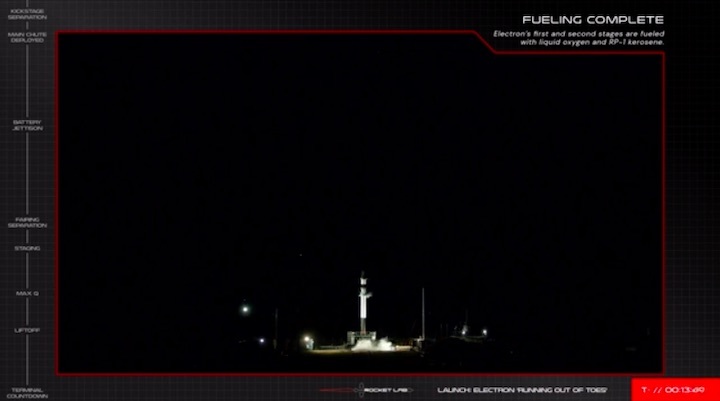
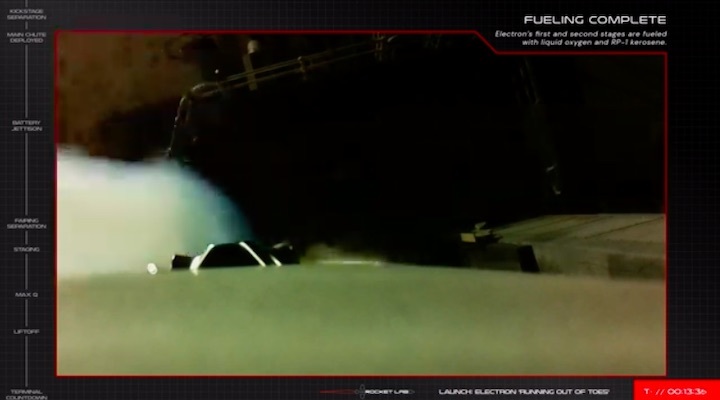
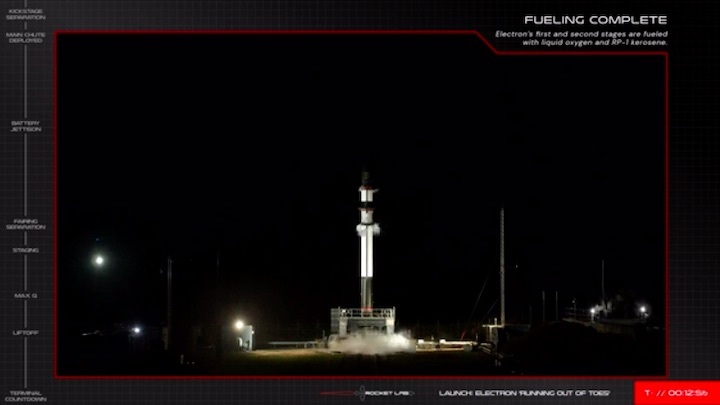
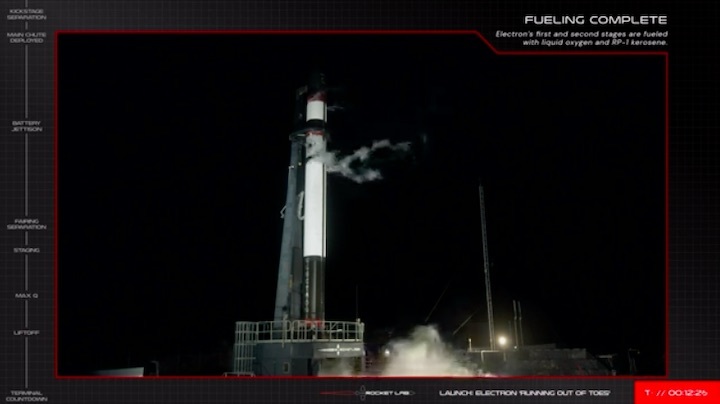



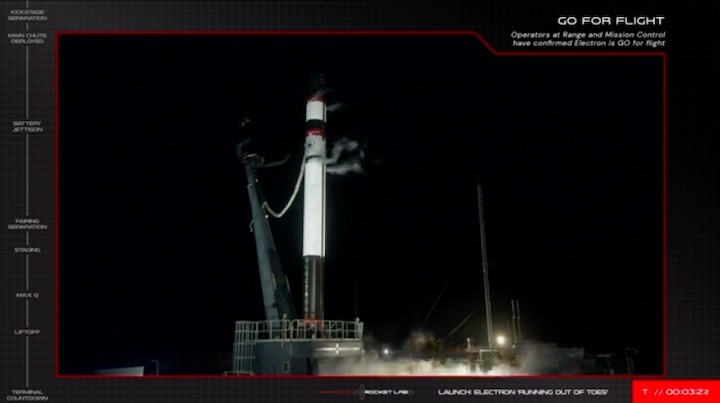
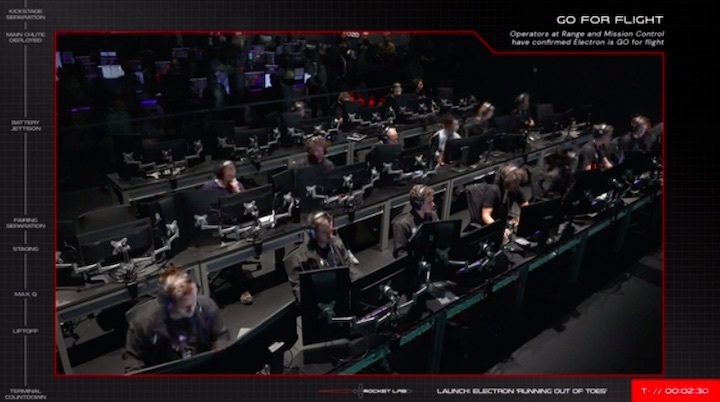
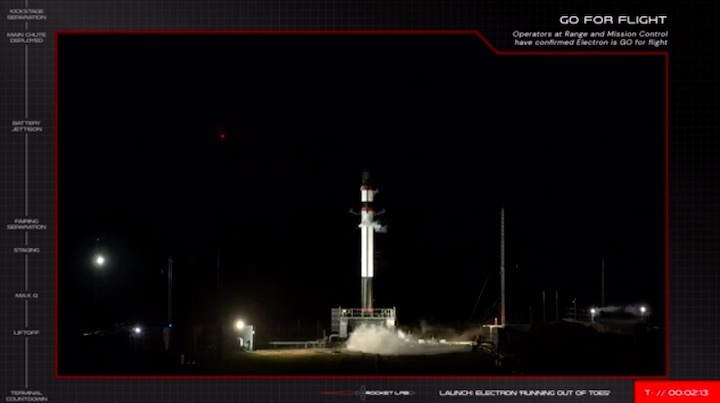
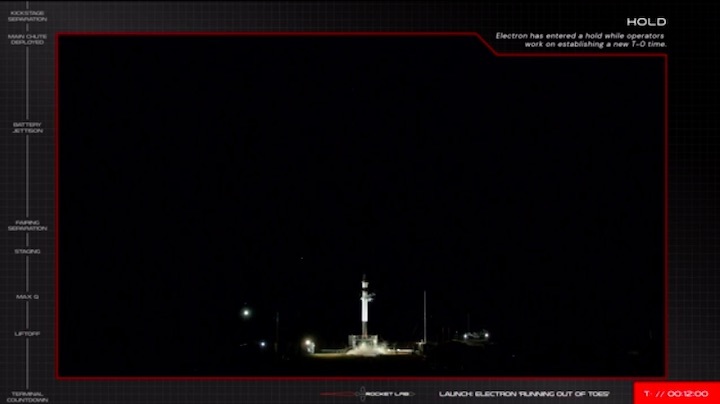
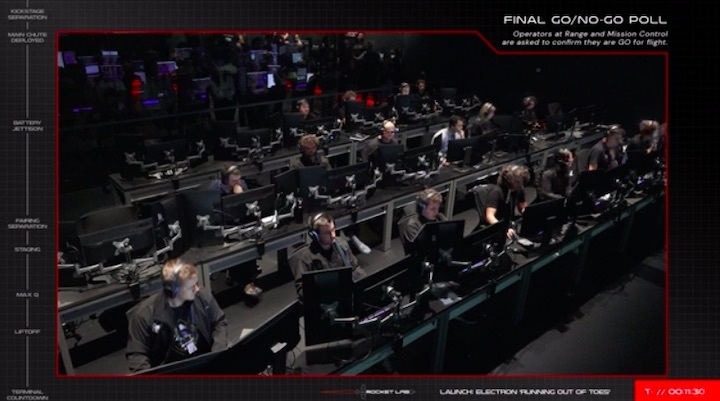
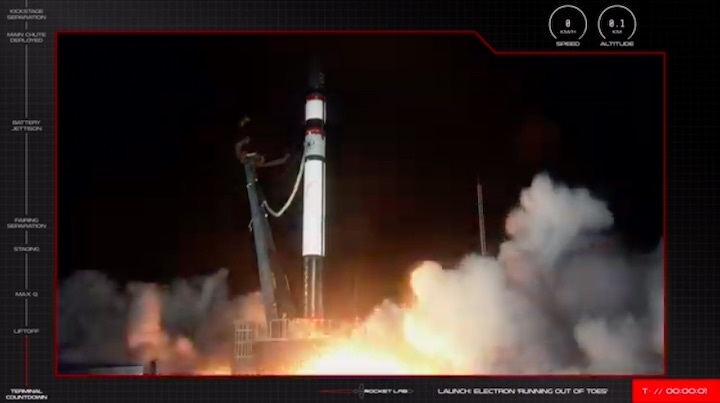
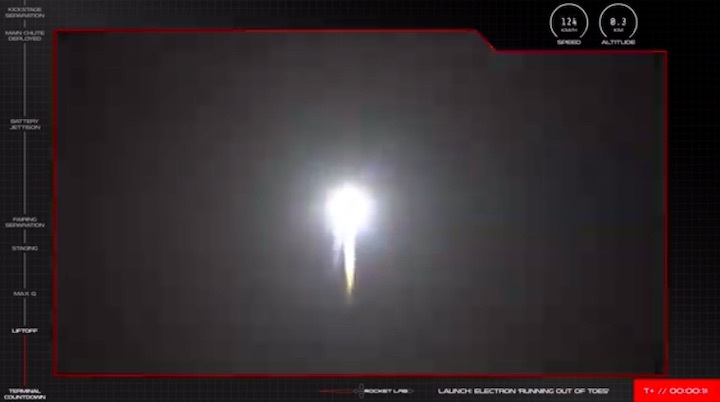
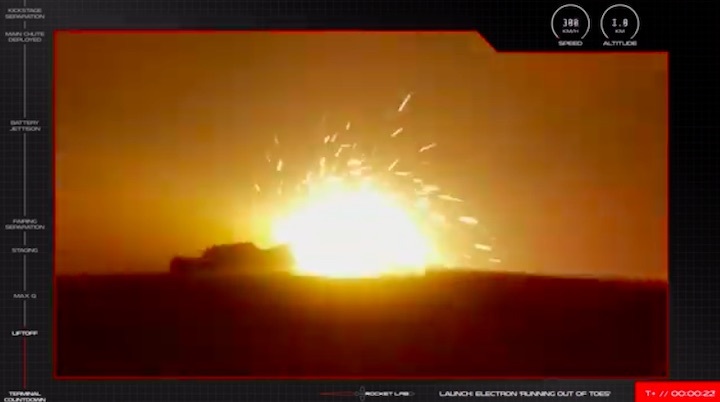
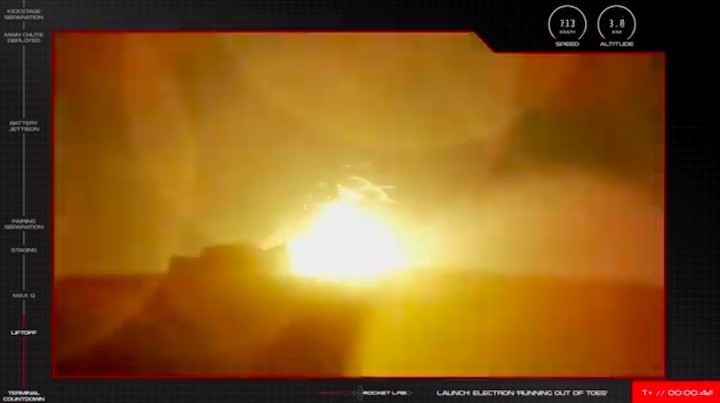
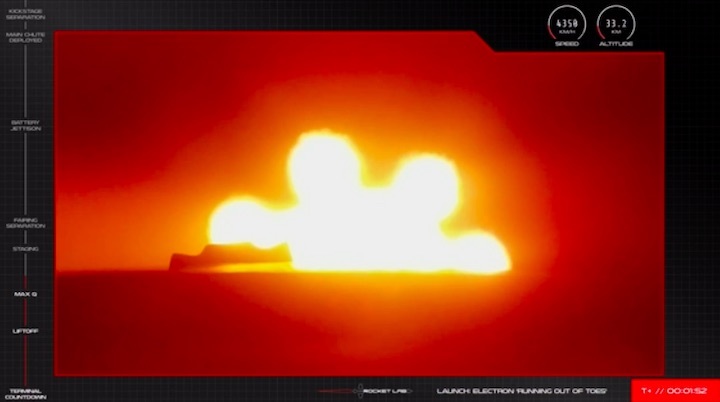
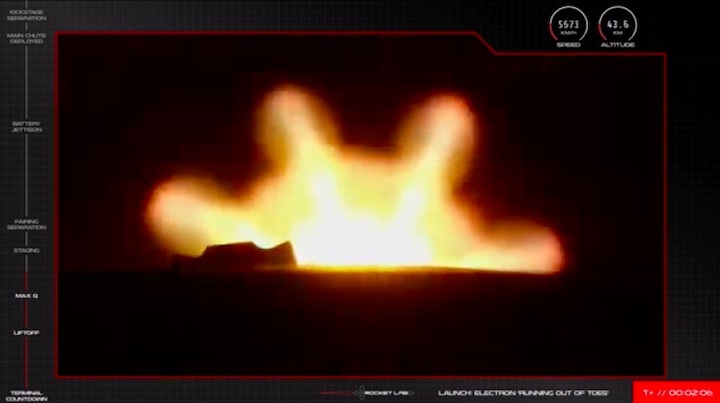
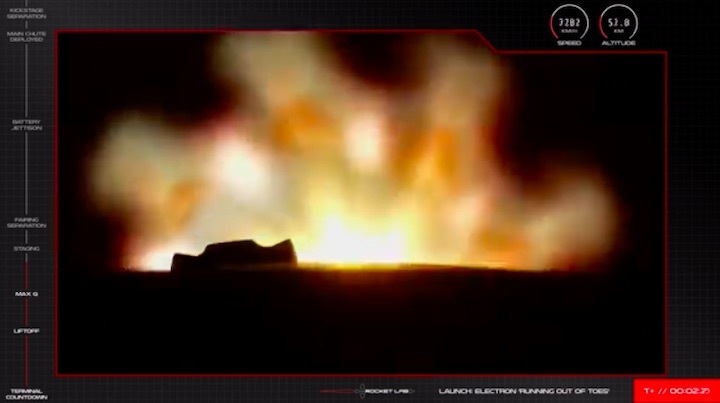
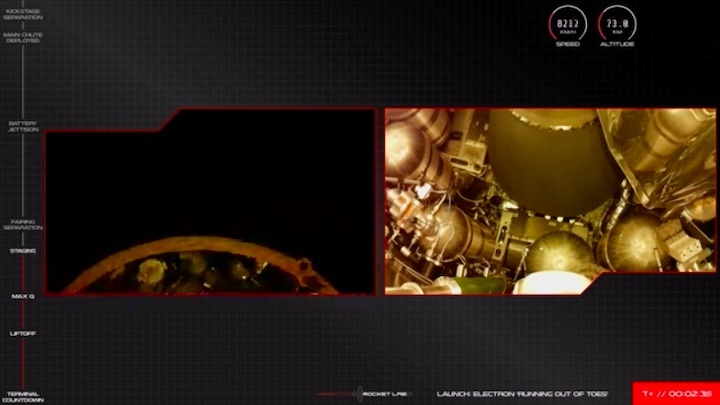
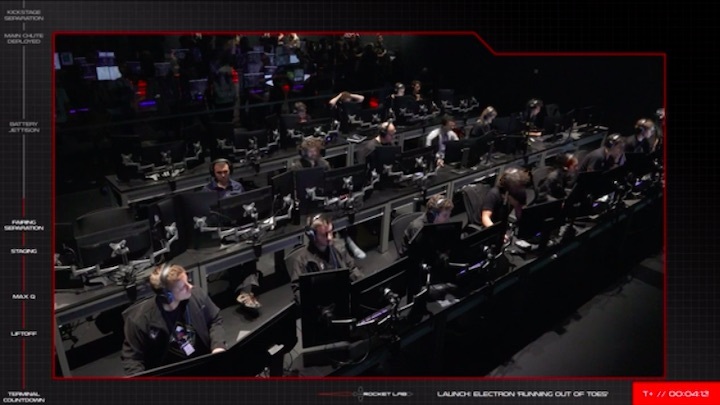


Quelle: Rocket Lab
+++
An issue was experienced during today's launch, resulting in the loss of the mission. We are deeply sorry to our launch customers BlackSky and Spaceflight. The issue occurred shortly after stage two ignition. More information will be provided as it becomes available.
Rocket Lab
+++
Electron launch fails
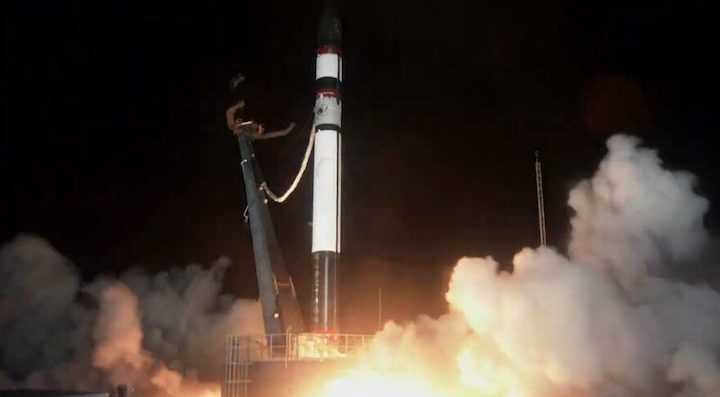
Updated 9:30 a.m. Eastern with company statement.
WASHINGTON — A Rocket Lab Electron rocket failed to reach orbit May 15 when its second stage engine shut down seconds after ignition, the second launch failure in less than a year for the company.
The Electron lifted off from Rocket Lab’s Launch Complex 1 in New Zealand at 7:11 a.m. Eastern. The liftoff was delayed by a little more than an hour because of upper-level winds.
The first stage of the vehicle appeared to perform as expected. The second stage then separated and ignited its single Rutherford engine. However, video from the rocket broadcast on the company’s webcast of the mission showed that engine shutting down seconds later. Telemetry from the launch indicated the vehicle was slowing down before that telemetry was removed from the webcast.
“An issue was experienced during today’s launch, resulting in the loss of the mission,” the company announced on social media nearly a half-hour after liftoff. “We are deeply sorry to our launch customers BlackSky and Spaceflight. The issue occurred shortly after stage two ignition.” The company did not immediately release additional information about the issue.
“Our team is working hard to identify the issue, rectify it, and be safely back on the pad as soon as possible,” Peter Beck, chief executive of Rocket Lab, said in a statement two hours after launch. “Our team is resilient, and our top priority remains to safely and reliably return to flight for our customers. We will learn from this, and we’ll be back on the pad again.”
The rocket was carrying two imaging satellites for geospatial intelligence company BlackSky. The launch was the first of four dedicated missions under a contract announced earlier this year through launch services company Spaceflight. The previous Electron launch, in March, also carried a BlackSky satellite as part of a rideshare mission.
The launch is the second failure of the Electron in less than a year, and the third in 20 launches. A July 2020 launch failed to reach orbit when the second-stage engine shut down nearly six minutes after liftoff. An investigation blamed the failure on faulty electrical connections in the stage. The vehicle returned to flight nearly two months later.
The first Electron launch, in 2017, also failed when a telemetry problem for range safety equipment triggered an abort several minutes after liftoff.
The focus on this launch was to be the company’s efforts to recover the rocket’s first stage as part of its efforts to eventually reuse those boosters. The company implemented improvements to the booster’s heat shield, among other changes, based on data collected during the first booster recovery in November 2020.
Rocket Lab said in its statement that the booster “safely completed a successful splashdown under parachute” and that crews on the recovery ship were working to retrieve the booster.
Quelle: SN

